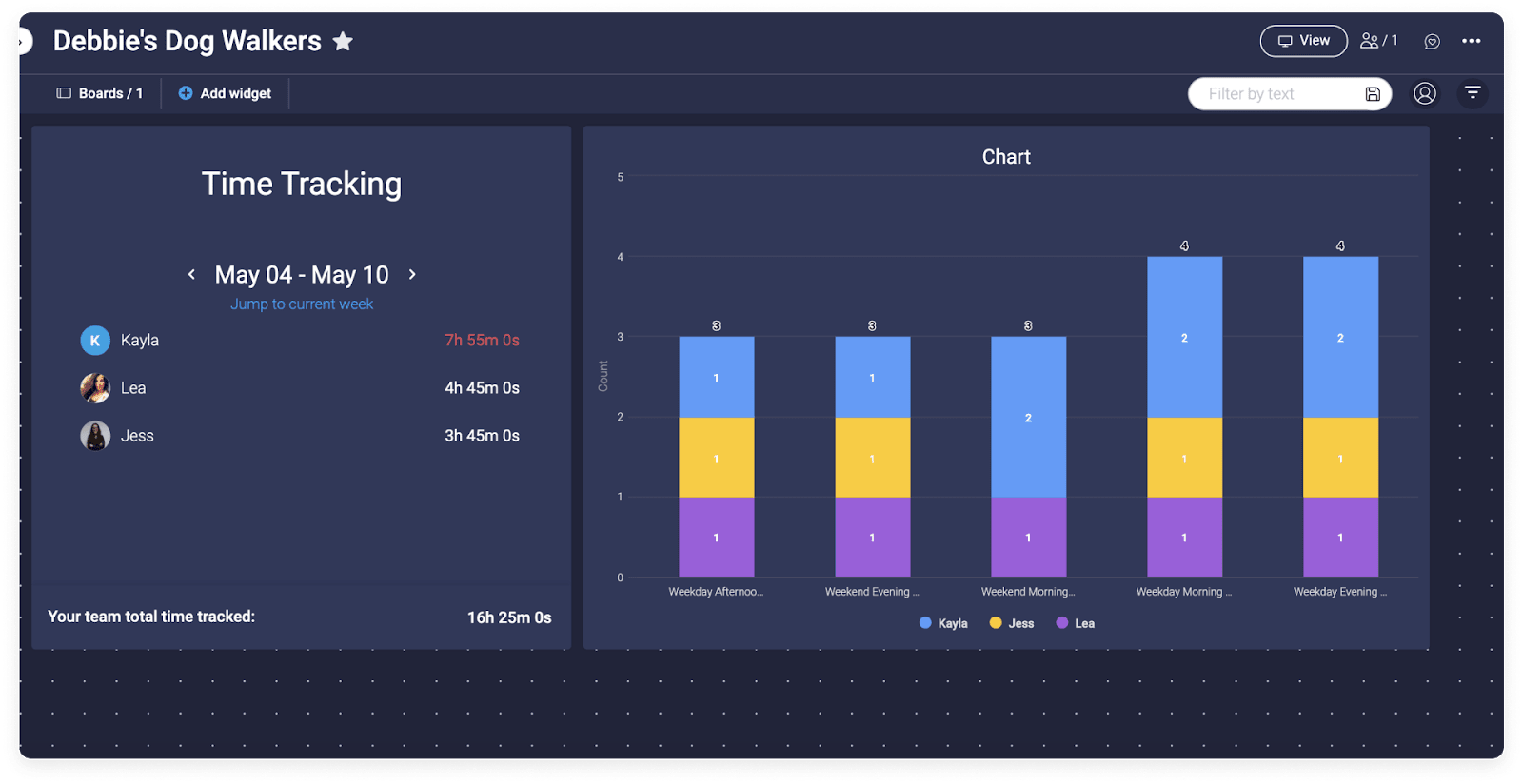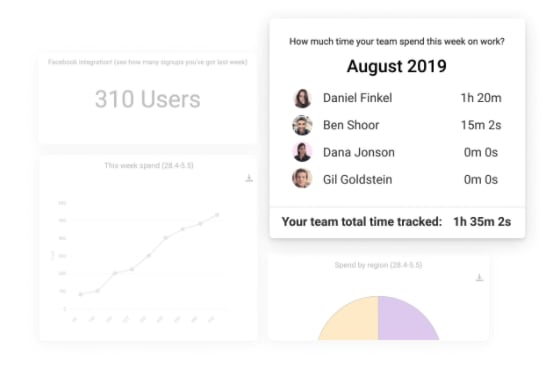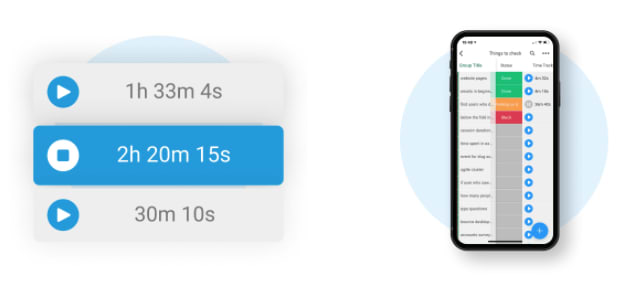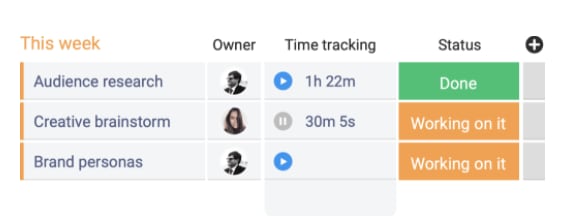Time tracking at its most basic level quantifies the value of the amount of work that went into a task — often so that an accurate fee can be charged or hourly employees can be paid.
But time tracking has proven itself valuable for more than just capturing work time. It’s a tool that can offer unique insights into individual and business-wide task management and boost productivity.
In this article we’ll detail everything you need to know about time tracking, including time tracking best practices, key methodologies, and our top tracking app recommendations for the most effective time tracking possible.
What is time tracking and why is it important?
Time tracking is essentially the use of a tracker app or other software tool to accurately measure the amount of time invested into a certain task.
Time tracking is often used for accurate employee time entry and payroll, as well as client invoicing.
People who provide services to clients on a freelance or hourly basis often need to prove how much time was committed to their work in order to be paid.
Writers come to mind, but also freelance software engineers, music tutors, graphic designers, business consultants, and more often use time reports when submitting invoices.
Companies also generally need to track the amount of work time dedicated to each project and client. For time and material or hourly clients this ensures that invoicing is accurate.
But even for flat fee contracts, accurate time tracking is worthwhile. It allows you to understand how much time is being invested into each project and task, so you can see which activities and clients are the most profitable.
Time tracking is also valuable as a process improvement tool.
By bringing time tracking into the equation for repeat tasks in an organization, you create a benchmark with which to measure efficiency and/or productivity. You can then adjust the way the task is conducted to measure whether it improves outcomes.

Let’s say you’re a marketing agency manager, and you begin to track the time it takes for campaign materials to be designed starting from the initial brief. It takes an average of 4 days to turn around the materials, 10% of which is spent in the briefing stage and 90% in the studio.
So, you allocate more time to the briefing stage, allowing the account executives to develop a more developed brief with mockups and detailed design specs. With this, your materials now take an average of 2 ½ days to complete instead of 4.
Such is the power of scientific management. But it couldn’t have been done without the help of your new best friend, analytical time tracking.
Finding an effective tool to make this all possible is the key to unlocking these insights. But what exactly do these tools do?
What are the main functions of time tracking software?
It’s an important question if you want to get the most value out of time tracking.
There are a few different types of time measurement that trackers can perform for certain task categories. Check out the below list for a breakdown of the most popular examples.
Individual task tracking:
Analytical time tracking’s bread and butter. This is a simple method of time tracking where the user manually defines a start and end point for a certain task, which is then stored in the tracking program for use in reporting.
Team tracking:
This function can be used to measure the sum of time it takes for a team to complete all of their delegated tasks within a project, like our marketing agency example earlier, split between the design team and the account team.
Whole-project tracking:
The final layer of the project onion, this time tracking function measures the time it takes to complete an entire project. The timer is stopped when all the individual sub-tasks within a project are completed.
With that in mind, we offer a list of the key criteria to keep in mind when searching for the perfect time tracking tool.
What are the essential features of a time tracking tool?
Though you could theoretically dust off your old stopwatch to take care of your time tracking, we certainly wouldn’t recommend it. Ignoring the battery limitation, you’d be missing out on a whole host of useful features like app integrations, reporting, and whole-project management.
Time tracking software has come a long way, so make sure the tool you’re eyeing up has a handle on the following key features.
Time tracking reports
Raw time tracking data gives a nice overview of time spent on certain tasks, but the real value-generating power of time tracking comes from the resulting data reports.
Time tracking reports use the data collected from your tracking efforts in different ways to create actionable conclusions like ‘streamline the client acquisition process’, or ‘reduce sales team’s mid-project coffee break time by at least 60%’ (sorry sales team).
So it’s important that your time tracker offers flexibility in the way that reports are generated, as well as allowing users to export data into number-crunching programs like Excel.
monday.com’s intelligent time tracking reporting
monday.com does all of the above and then some.
You can analyze your data as you wish — see a breakdown of time by projects, clients, and tasks, and plan your time better with intelligent time management software.
Plus, see preset or custom breakdowns right there on the dashboard, or easily export your data to Excel in a click.

Real-time synchronization across devices
Those who have managed demanding projects will know that the work day rarely ends when it should.
Things change, deadlines sneak up on us, and people work overtime. That’s why it’s key that your time tracking app offers up the right information up to the minute, everywhere you need it.
Make sure that the employee time data your time tracking software collects is updated in real-time across your desktop app, web app, or mobile app.
This is especially important for service providers and their clients in tracking billable hours, so budgeting is kept up-to-date and there are no surprises down the road.
monday.com’s real-time data synchronization
Never get left out of the loop. In monday.com, groups, items, and sub-item time tracking is all synced in real time for every team member or project guest, on desktop and mobile devices alike.
Is your subcontractor burning the midnight oil putting in some serious work hours? Know exactly how that affects project progress and budgeting the moment the time is logged.

Whole-project management
The best time tracking tool will always be the one that is most integrated with your current project management software, as it can offer parallel access to key project functions and data.
For example, measuring team progress on certain tasks like we mentioned earlier is only possible on an integrated project management platform. The tracker can identify the virtually assigned teams and note the tracked time to create an overall value for team progress.
This is especially useful if you’re a manager, as you’ll be able to track the time spent by teams and individuals and identify areas that need your attention or positive feedback (preferably the latter!).
monday.com’s project management solution
Shameless promo time. monday.com is here for your unified project/time management needs.
We’ve developed a full-suite project management platform where adding time tracking functionality is as simple as dragging and dropping a column in the right place.
Easily switch the timer on and off or enter time spent manually, track time anywhere with our mobile app, and analyze your data to your heart’s desire all in one clean visual dashboard.

monday.com: time to upgrade
See what we did there?
Let’s get real for a second. We’ve spent the last few years developing the perfect project management platform that strikes a balance between technical smarts and foolproof simplicity.
Your project is one dashboard away from completion, and time tracking is one of our specialties.
By simply dragging and dropping the Time column to your project dashboard, you can track projects, teams, tasks, and sub-tasks at the click of a button.
Receive regular report summaries of time tracked, and easily export the data to Excel ready for crunching.
All your data is synced in real time automatically so everyone’s always on the same page.
We want to let you see for yourself why monday.com is the best time tracker out there, even compared to single-use trackers. So we offer a 14-day trial to put our money where our mouth is.
Conclusion
Time tracking is lonely when it’s not part of wider project management software. You can unlock game-changing insights to your teams and organization’s workflows by putting all the pieces together in one cohesive platform.Analytical time tracking is everything it’s cracked up to be when paired with the right system.
Access all of these productivity-boosting insights by heading over to monday.com and getting started on your next project.


